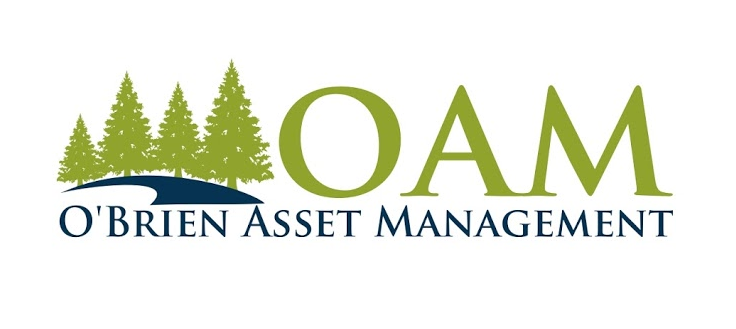Well, here we go again! Another year, another set of tax changes to navigate. This time, it’s the new tax bill, H.R.1, aka the One Big Beautiful Bill Act. My goal here isn’t to get into the political weeds, but to focus on the practical implications of the changes that are coming in regard to personal finance.
Make no mistake, the continuation of the tax cuts and unchecked spending contained within the bill will have deep and lasting implications for interest rates, inflation, and wealth inequality in the U.S. But those will play out over the coming years.
At its core, OBBBA makes permanent many of the provisions of the original Tax Cuts and Jobs Act (TCJA) that we got in the first Trump administration. This includes the TCJA's lowered tax brackets, increased standard deduction, Section 199A deduction for Qualified Business Income (QBI), and increased Child Tax Credit. All of these receive minor tweaks but remain substantially the same as they were under TCJA.
However, the $10,000 limitation on State And Local Tax (SALT) deductions is temporarily increased to $40,000 under the new law. Higher-income households may see this deduction phased back down to the $10,000 limit, and all households will again be subject to the $10,000 SALT cap beginning in 2030. But until then, this is a big plus for homeowners as property taxes will once again lower your federal tax bill.
While the bill did not eliminate taxes on Social Security Income, taxpayers ages 65 and older may receive an extra tax deduction—whether or not you itemize—of $6,000 ($12,000 for married couples if both over 65). The full $6,000 deduction is allowed for individuals with up to $75,000 of modified adjusted gross income, or AGI, and $150,000 if married and filing jointly. It phases out for taxpayers who are above those thresholds and is eliminated completely at $150,000 and $300,000, respectively. Notably, the temporary age 65+ deduction is on top of the additional standard deduction given to individuals who are either age 65+ or blind, which adds an extra $2,000 to the standard deduction for single filers or $1,600 for each eligible married filer. This deduction is effective for years 2025 through 2028.
If you've been on the fence regarding electric vehicles, act quickly. The tax act ends the $7,500 tax credit for households that buy or lease a new electric vehicle as well as the $4,000 tax credit for buyers of used EVs. These tax credits will disappear after Sept. 30, 2025. Additionally, it eliminates tax credits for consumers who add energy-efficient improvements to their homes, such as rooftop solar, electric heat pumps, or efficient windows and doors. These credits will end after Dec. 31, 2025.
A higher standard deduction since the TCJA has meant that few taxpayers itemize (less than 10 percent of filers). An unfortunate consequence of that is that charitable contributions, even those made to an eligible organization, could not be counted against income.
The Cares Act of 2020, passed during the COVID-19 pandemic, temporarily created a new charitable deduction of up to $300 for single filers and $600 for joint filers who claimed the standard deduction – but that provision only lasted two years and expired after 2021.
Section 70424 of OBBBA permanently restores the charitable deduction for non-itemizers starting in 2026 and increases the maximum deduction to $1,000 for single filers and $2,000 for joint filers. Unlike the Schedule A version of the charitable deduction, this deduction is not subject to the 0.5% floor on the deductibility of charitable contributions. Which means that taxpayers can take the new deduction regardless of income or other deductions.
As for the big three issues touted by President Trump on the campaign trail, we'll look at them one by one.
There is "No Tax on Tips" provision in OBBBA that doesn't actually eliminate taxes on tips – income from tips is still subject to payroll tax, included in Adjusted Gross Income (AGI), and may also be subject to state income tax. But it does create a deduction (with many caveats) for up to $25,000 of "qualified tip" income which will be in effect from 2025–2028.
The "No Tax On Overtime" provision, like "No Tax on Tips", doesn't exempt overtime compensation from income but instead creates a deduction for the amount of qualified overtime compensation received, effective from 2025–2028. The deduction would apply to the amount of overtime compensation paid above an employee's normal rate. For example, if an employee earns $20 per hour in base wages and $30 per hour for overtime, only the extra $10 per hour for overtime wages would qualify, not the $20 hourly base rate.
The third major tax proposal that arose during the 2024 campaign was to make interest on auto loans tax-deductible. Consequently, OBBBA includes a new deduction for "qualified passenger vehicle loan interest" that will be in effect from 2025 through 2028. The deduction would apply to interest on loans used to purchase certain vehicles for personal use (i.e., not for business or resale). Notably, the deduction applies only to interest on new loans taken after December 31, 2024. Interest on loans taken earlier would not be deductible.
As with the qualified tip and qualified overtime deductions, OBBBA's new auto loan interest deduction is a below-the-line deduction that can be taken whether the taxpayer itemizes deductions or takes the standard deduction.
The Trump tax law brings many more changes to tax laws and other areas than what's been covered here. These include (but not limited to) reduced phaseout thresholds and a faster phaseout rate for the Alternative Minimum Tax (AMT) exemption, an expansion of eligible 529 plan expenses to cover K–12 materials and postsecondary credentials, and an extension of the Qualified Opportunity Zone program. The law also increases the gift and estate tax exclusion to $15 million per person and creates a new "Trump account", a type of IRA that can be funded at a young age (and without any earned income). More on that as it is implemented.





